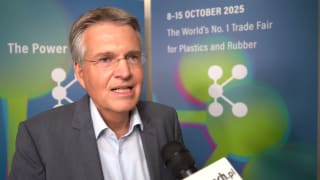 Specialty chemicals company Lanxess is exhibiting at the International Rubber Conference (IRC) in Nuremberg as an important partner in an industry that is under constant pressure for new innovations. At a shared stand (No. 304 in Hall 12) experts from the Tire & Specialty Rubbers and High Performance Elastomers business units together with additives specialists from the Rhein Chemie Additives and Advanced Industrial Intermediates business units present the current challenges and the solutions Lanxess has developed to their customers. In addition, the teams will also play a key role in the presentation program, with in-depth contributions on current developments in the rubber sector. These will focus both on news from the Lanxess materials laboratories and on practical recommendations on subjects such as rubber compounding and improving sustainability.
Specialty chemicals company Lanxess is exhibiting at the International Rubber Conference (IRC) in Nuremberg as an important partner in an industry that is under constant pressure for new innovations. At a shared stand (No. 304 in Hall 12) experts from the Tire & Specialty Rubbers and High Performance Elastomers business units together with additives specialists from the Rhein Chemie Additives and Advanced Industrial Intermediates business units present the current challenges and the solutions Lanxess has developed to their customers. In addition, the teams will also play a key role in the presentation program, with in-depth contributions on current developments in the rubber sector. These will focus both on news from the Lanxess materials laboratories and on practical recommendations on subjects such as rubber compounding and improving sustainability."The European rubber industry is currently undergoing major changes. Developments such as globalization, new challenges brought about by the expansion into related technical fields, and the growing importance of sustainability topics for an increasingly wide circle of customers can bring huge opportunities for innovative suppliers - but also require the industry to continually adapt products to market requirements," explains Jan Paul de Vries, head of the Lanxess High Performance Elastomers business unit. "For instance, increasing cost-effective production requires special-purpose rubbers that have been specifically optimized for current production processes. Anyone wanting to maintain their reputation as a successful supplier of high-end products in the future has to consider issues such as the temperature resistance of the rubbers in their portfolio. What’s more, the growing significance of environmental protection makes "green" compounds increasingly appealing in the eyes of many customers. Success therefore clearly depends on accelerating innovation processes. And Lanxess has a range of solutions to offer here."
Innovative rubber opens up new opportunities
Examples of exciting materials from the Lanxess rubber technical center with which the Cologne-based specialist is responding to the latest developments include Keltan 9565Q, Levapren PXL and new, high-performance polybutadiene and SSBR grades. One rubber in the new Buna FX product group developed by the Tire & Specialty Rubbers business unit is a functionalized SSBR grade that improves polymer/filler interaction in the tread mix and thus reduces the rolling resistance of tires while also increasing grip. Another rubber grade in the Buna VSL portfolio makes it possible to significantly reduce tread wear without compromising on other important properties.Keltan 9565Q is an ultra-high-molecular EPDM grade that, thanks to its high molecular weight, can provide rubber products subject to high dynamic stress with properties that were previously only possible when using natural rubber compounds. Its tan delta values, tensile strength and elongation at break make Keltan 9565Q an excellent alternative to natural rubber. The new Keltan grade from Lanxess performs much better than unsaturated natural rubber in terms of resistance to oxygen, ozone, weathering and heat. As a result, Keltan 9565Q can contribute to increasing maintenance intervals and improving machinery performance.
Levapren PXL is a pre-crosslinked EVM rubber with a Mooney viscosity that advanced reactive extrusion processes at Lanxess have brought up to the exceptionally high standard that technicians often need. The crosslinking density in the free-flowing rubber granules is much more homogeneous than is possible using the radiation pre-crosslinking methods used until now. This allows mixing times during processing to be substantially reduced, even when requirements on the surface quality of the products are particularly high, as is the case for cable sheathings, for instance. "Levapren PXL is perfect for the continuous mixing processes that are becoming increasingly important in the rubber industry because of their cost-effectiveness," says de Vries.



